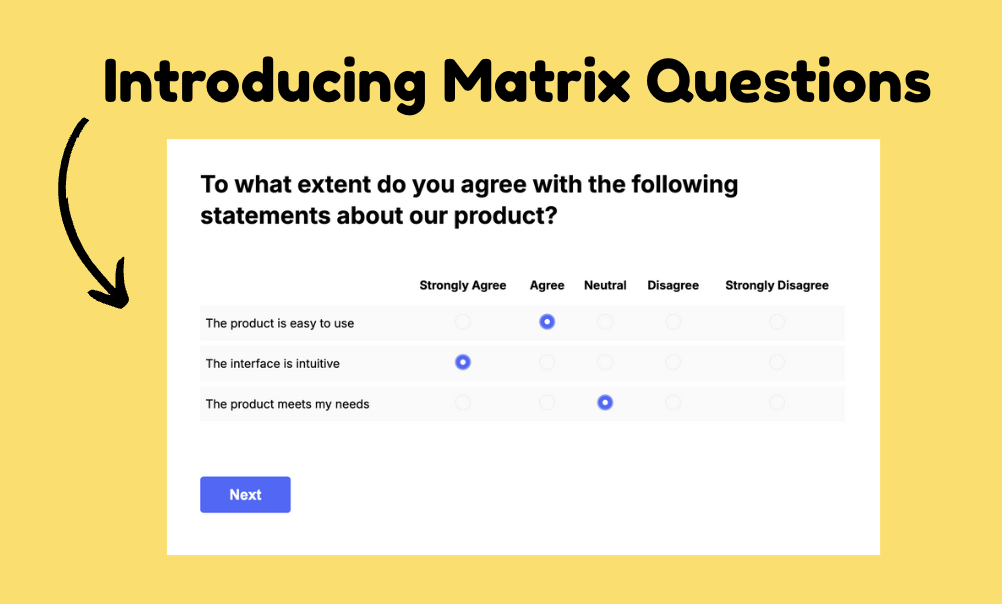In a world where every launch counts, guessing what users want just doesn’t cut it anymore.User expectations are evolving, feedback loops are faster, and iteration cycles are tighter. You can’t just ship fast—you have to ship smart.
That means moving away from guesswork and towards clarity. It means capturing how users behave, understanding what they’re saying, validating hypotheses quickly, and using that information to inform what gets built next.
But doing that well requires the right tools. Specifically, it requires tools that are lightweight, flexible, and built for speed—the kind of tools that many Y Combinator-backed startups build for themselves and others like them.
The YC Stack is a modular, best-in-class toolchain for modern product teams. It’s built to help you observe user behavior, collect feedback at scale, test ideas before they hit code, and prioritize your roadmap based on real evidence—not HiPPO opinions.
Let’s break it down.
The Stack, Broken Down by Workflow
1. User Behavior & Analytics
What are users doing? Where are they dropping off?
Understanding what users do in your product is step one. If you don’t have a clear picture of how users actually behave, it’s like building with the lights off. That’s where tools like Amplitude, Mixpanel, and PostHog help out.
Amplitude
Amplitude helps product teams really understand what users are doing — from their first click to their latest session — so they can make smarter decisions at every step.
You can see what actions lead to retention, where new users drop off, and which features drive engagement. Its powerful funnel analysis, cohort segmentation, and retention tracking help you understand long-term user behavior, not just vanity metrics like daily active users.
Example use case: After launching a new onboarding flow, a product manager uses Amplitude to measure how many users complete each onboarding step and how that correlates with 7-day retention. If completion of Step 3 boosts retention by 20%, that’s insight worth acting on.
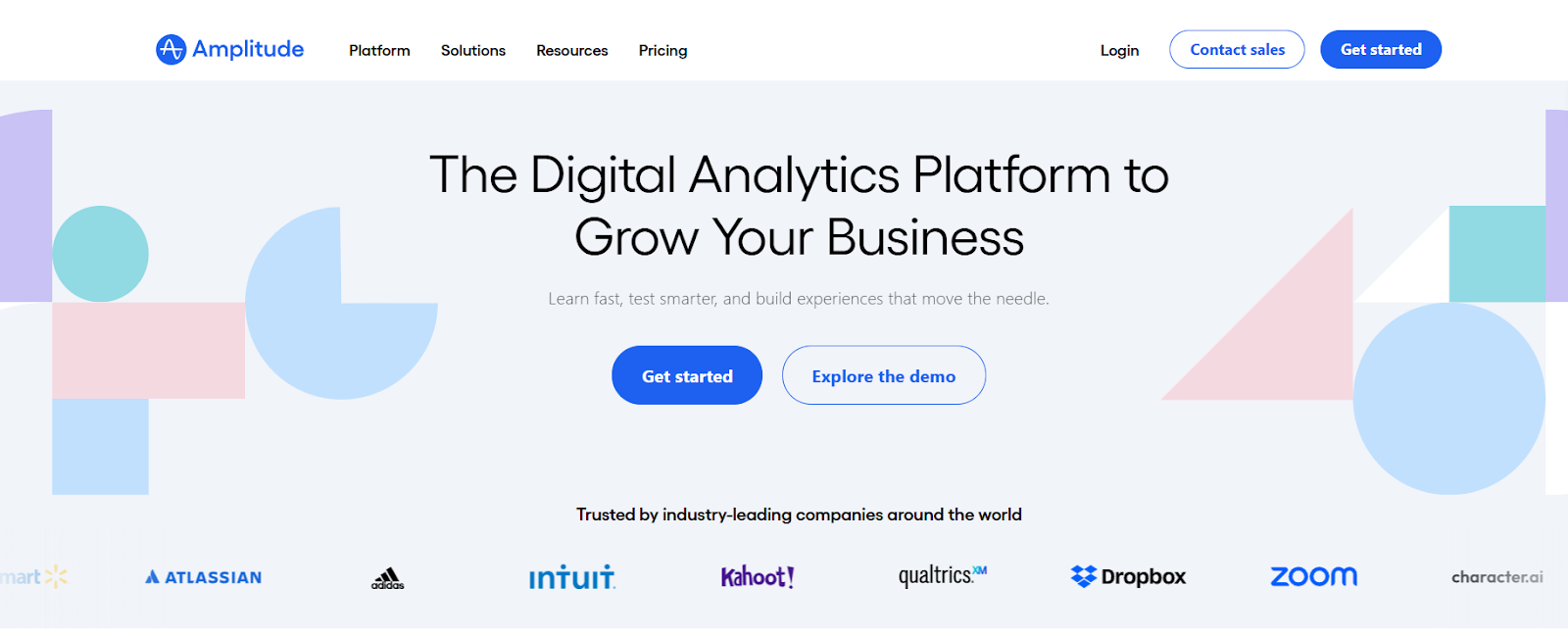
Mixpanel
Mixpanel offers similar capabilities with a more intuitive UI and a strong emphasis on real-time feedback loops. It’s excellent for fast-moving teams that need instant answers without waiting on data teams. Mixpanel’s event-based tracking, retroactive funnel building, and integrations with A/B testing tools make it ideal for iterative product development.
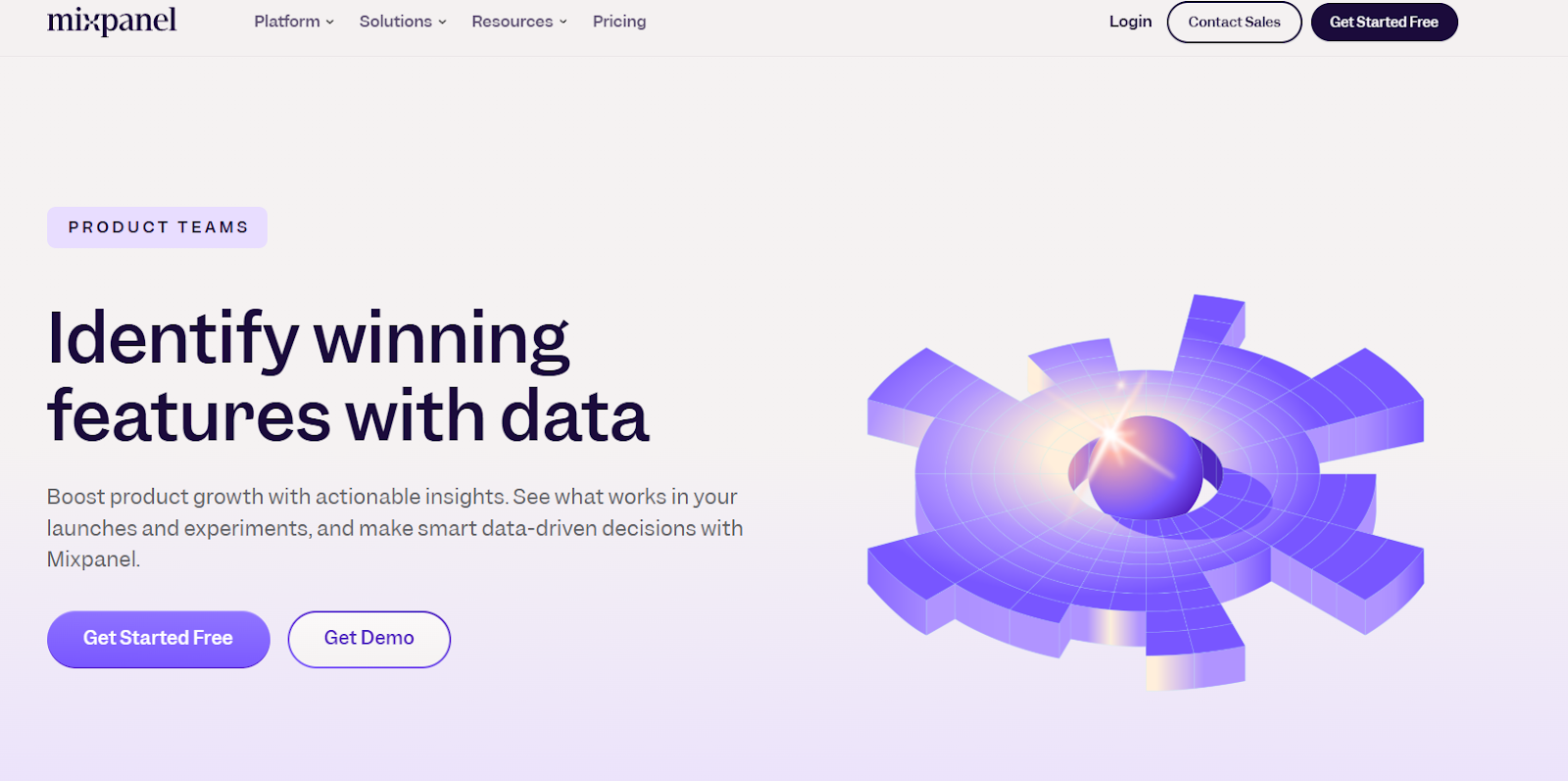
PostHog
If you're privacy-conscious or prefer self-hosted tools, PostHog is an all-in-one alternative. It’s open source and includes product analytics, session recordings, feature flags, and experiments. That means fewer integrations and faster setup. With autocapture and deep developer tooling, it’s also beloved by engineering-driven teams.
The takeaway: Use these tools to move beyond dashboards and into diagnostics. When metrics dip or users churn, this is where you start asking “why?”
2. Session Replays
What does that behavior look like in practice?
Numbers alone don’t tell the whole story. To truly understand how users experience your product, you need to see it with your own eyes. That’s where session replay tools come in—particularly PostHog’s Session Recording feature.
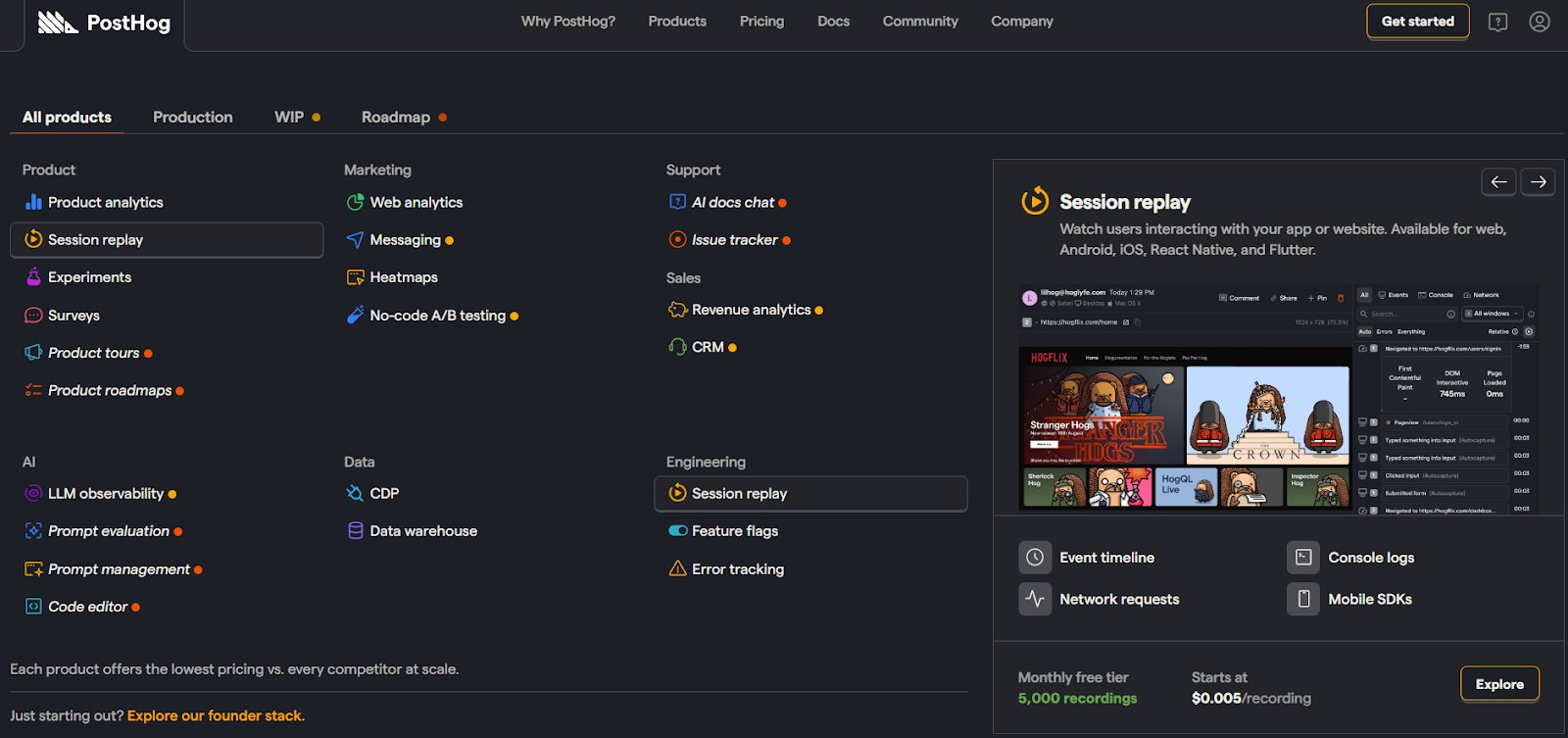
With session replays, you can:
- Watch real user sessions, complete with clicks, scrolls, and form inputs.
- Identify where users get stuck or confused.
- Detect rage clicks, dead zones, and broken UI flows.
- Correlate user frustrations with funnel drop-offs.
For example, you might see a sharp drop in conversions on your pricing page. A replay could reveal that mobile users are struggling to interact with a broken CTA button—something that a funnel chart alone wouldn’t show you.
By pairing visual insights with behavioral analytics, you unlock the full context behind your metrics. It’s the bridge between “what” and “why.”
3. Feedback Collection & Insights
What are users telling you—directly or indirectly?
Behavior is just one part of the picture. To build truly user-centric products, you need to collect and analyze qualitative feedback. This is where YC tools really shine.
Blitzllama – Your all-in-one feedback operating system
Blitzllama is a powerhouse for in-product feedback. It enables you to:
- Launch targeted, contextual surveys in-app or via links.
- Automatically categorize responses using AI (by theme, sentiment, intent).
- Run prototype tests before writing a line of code.
- Monitor post-launch satisfaction in real-time.
- Aggregate feedback across reviews, tickets, and chats.
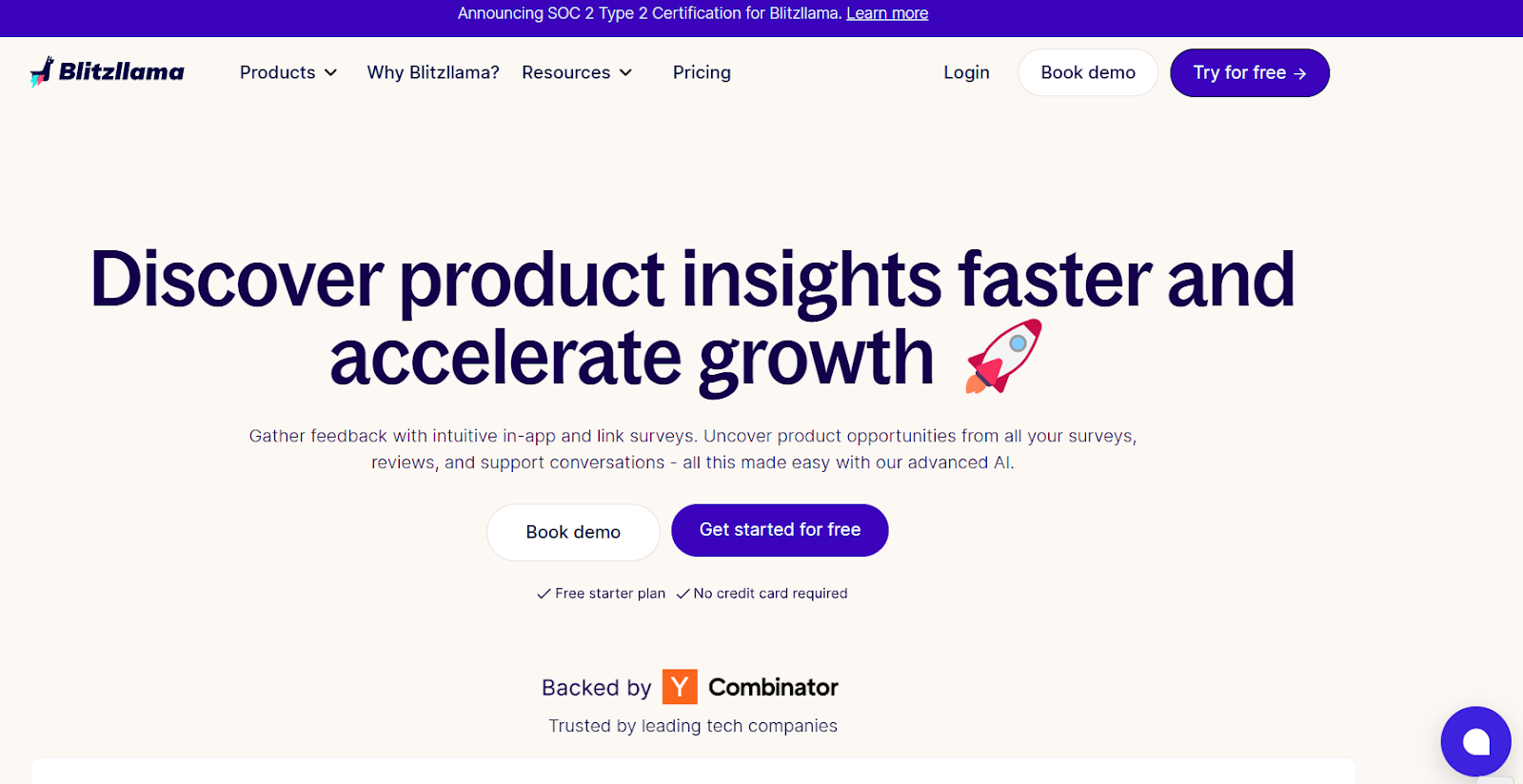
For example, imagine you launch a new dashboard feature. Blitzllama can trigger a survey to users who interact with it, asking: “What do you think of the new dashboard?” Their open-ended responses are summarized and categorized automatically—no manual tagging required.
Better still, it syncs with tools like Mixpanel, Amplitude, and Slack, so insights don’t live in a silo. It’s a fast track from “user said this” to “let’s prioritize that.”
Monterey.ai (Reforge Insight Analytics) – Unify your voice of the customer
Monterey pulls in feedback from everywhere — emails, chats, reviews, support tickets — and uses AI to spot the trends that actually matter. It’s like having a live feed of what customers are feeling, minus the chaos.
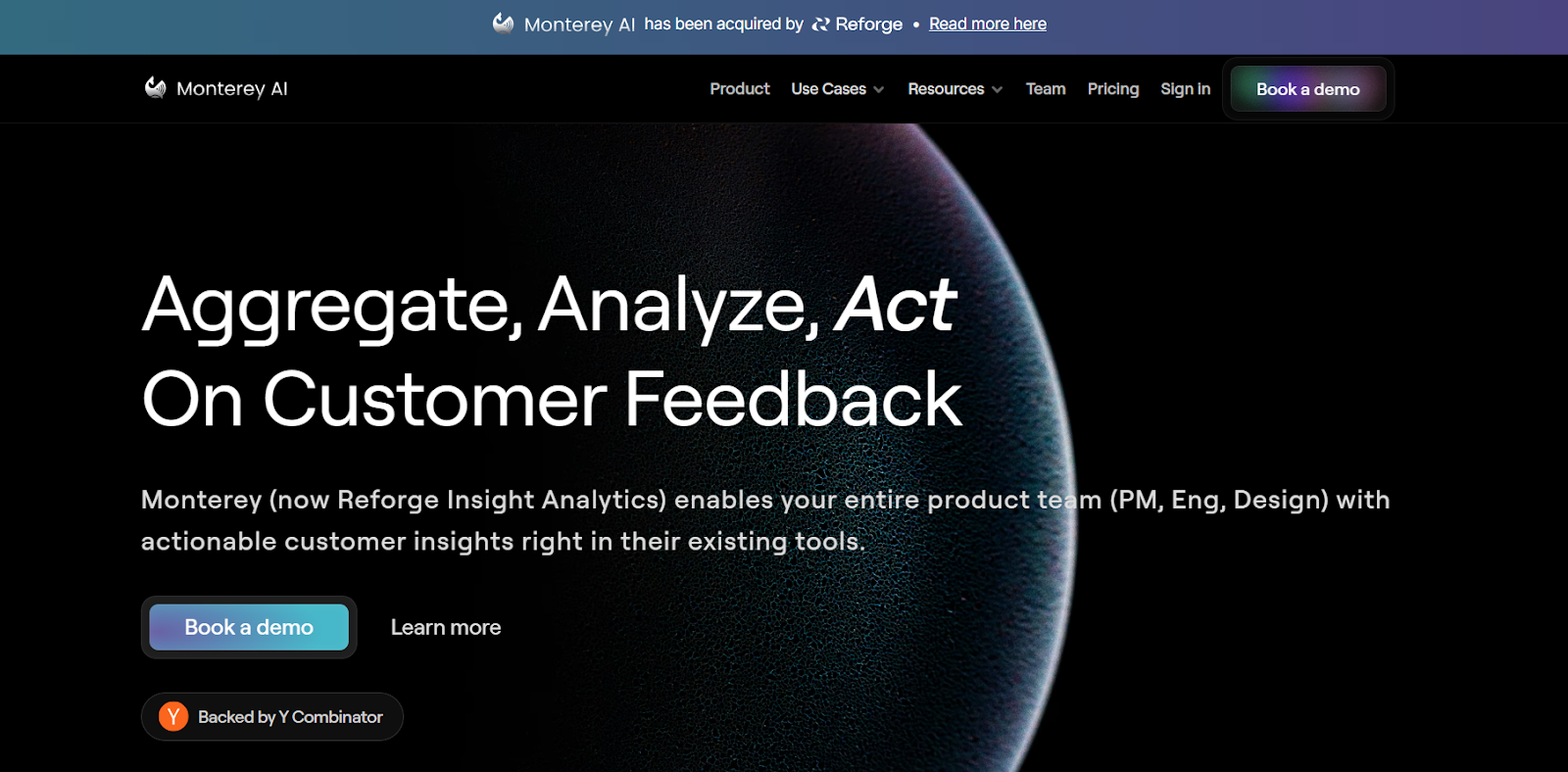
It’s especially valuable for understanding systemic pain points. If “hard to use onboarding” keeps popping up across Zendesk tickets and app reviews, Monterey will surface that pattern and route it to the right product owner.
Rally – Recruit, schedule, and manage user interviews at scale
Rally is a user research CRM built for product and UX teams. It automates:
- Outreach and scheduling for interviews and tests.
- Incentive distribution.
- Participant segmentation and profiling.
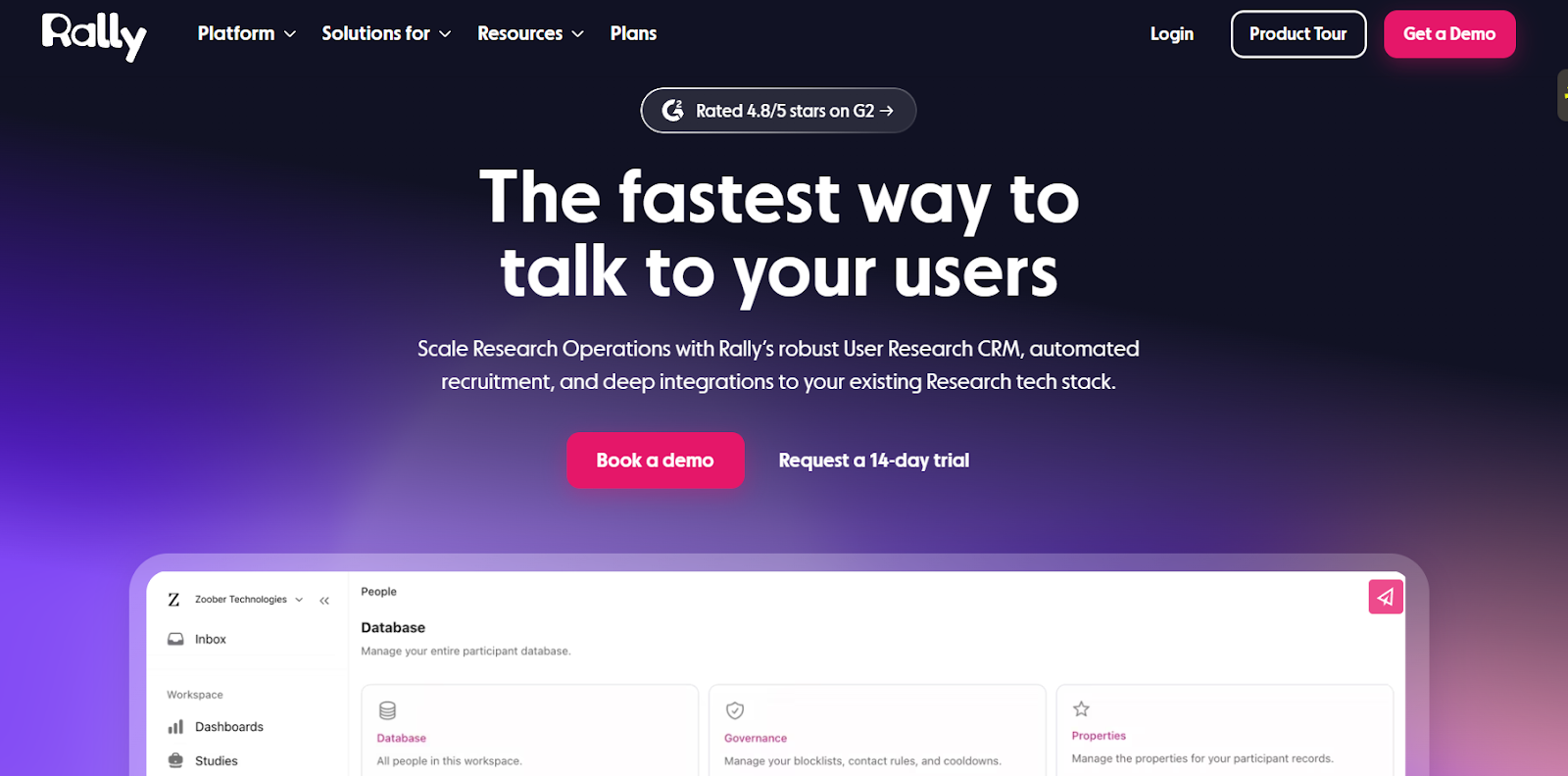
It’s perfect for teams running continuous discovery or validating big bets with actual users. You can segment users based on cohort, engagement, demographics, and more—and invite them to participate in targeted studies. It takes the friction out of recruiting and managing research.
Together, Blitzllama, Monterey, and Rally create a robust qualitative insights engine that complements your analytics data and keeps user voices close to every decision.
4. Roadmap Prioritization
What should we build next—and why?
Once you’ve collected behavior and feedback data, the next step is deciding what to act on. Linear is the modern tool for tying it all together.
Built by ex-YC founders, Linear is purpose-built for high-velocity product development. It combines:
- Fast issue tracking (think: supercharged Jira).
- Visual roadmap planning.
- Project updates and milestones.
- Custom views for PMs, engineers, and leadership.
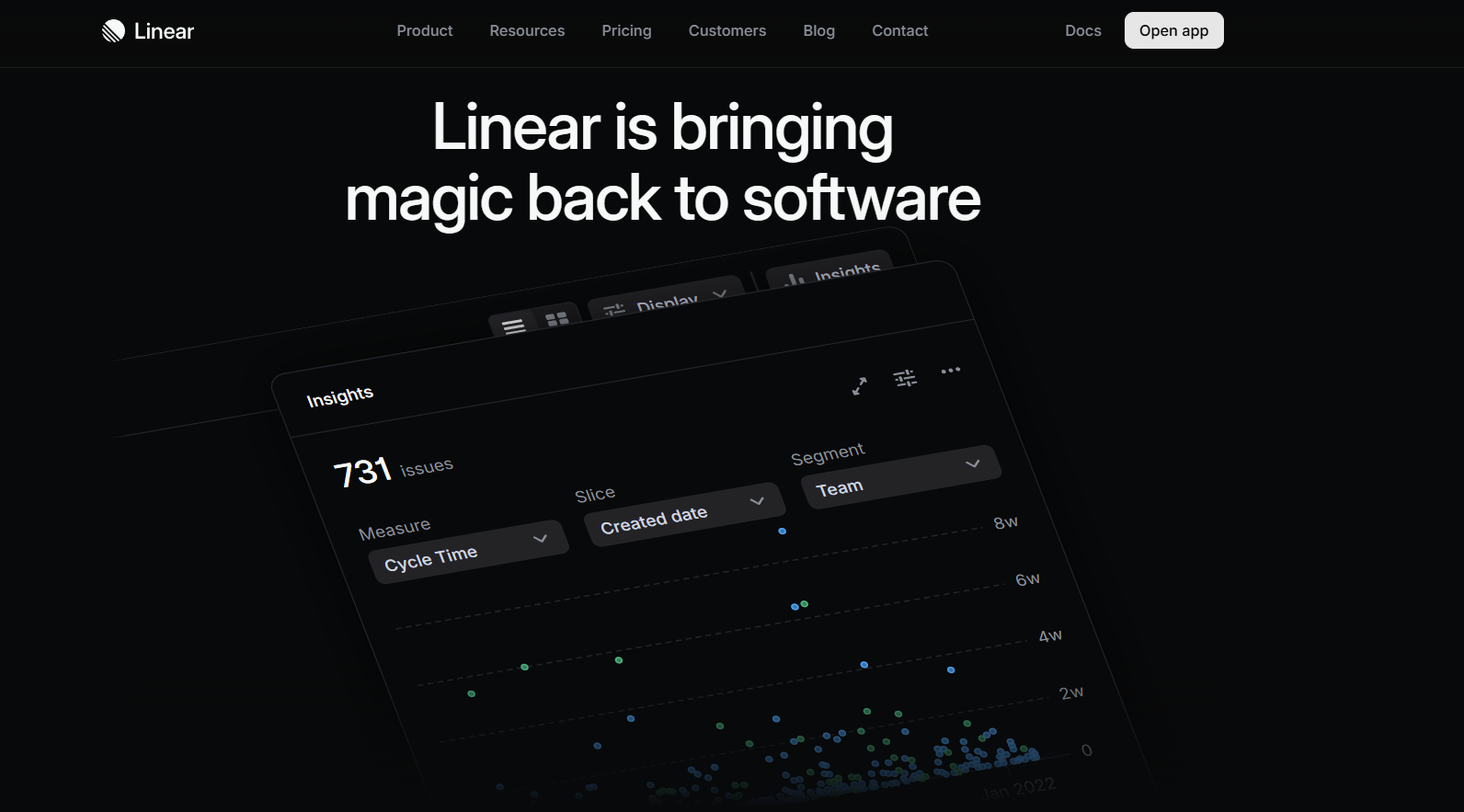
What makes Linear special is how seamlessly it aligns execution with strategy. You can tag issues with feedback themes, link them to product KPIs, and track roadmap impact over time. It’s the connective tissue between your stack and your outcomes.
Linear also plays nicely with Slack, GitHub, and other tools—keeping your entire team aligned and focused.
Example Flow in Action
Let’s walk through how this full-stack approach might look in practice:
- You ship a new onboarding flow.
- Amplitude shows only 30% of users complete it—way below your benchmark.
- You investigate the funnel and use PostHog to view session recordings. You see most drop-offs happen midway, where the instructions get dense.
- Blitzllama triggers an in-product survey asking, “What’s unclear here?” Users say they’re confused by the setup steps.
- You redesign the flow and test a Figma prototype using Blitzllama’s concept testing.
- Once live, you measure improved completion rates in Mixpanel and better satisfaction feedback in Blitzllama.
- You summarize learnings, tag insights in Linear, and prioritize similar improvements across other onboarding areas.
This isn't just a stack. It’s a feedback flywheel—observe, understand, test, validate, repeat.
Conclusion: From Tracking to Learning
The best product teams don’t just move fast—they move with purpose. And they don’t just collect data—they learn from it.
The YC Stack helps product teams do exactly that. Each tool in this ecosystem is designed to close the loop between:
- Quantitative data (what users do),
- Qualitative feedback (what users say),
- Product decisions (what you build next).
This isn’t about adding more tools to your workflow. It’s about building a smarter, more adaptive product muscle—one that listens, learns, and builds better every sprint.
So here’s your challenge:
Audit your current toolset. Are you just tracking… or are you truly learning?
Want help setting up your YC-style stack or running a product feedback sprint? Let’s chat. Your users are already talking—make sure you're listening.



